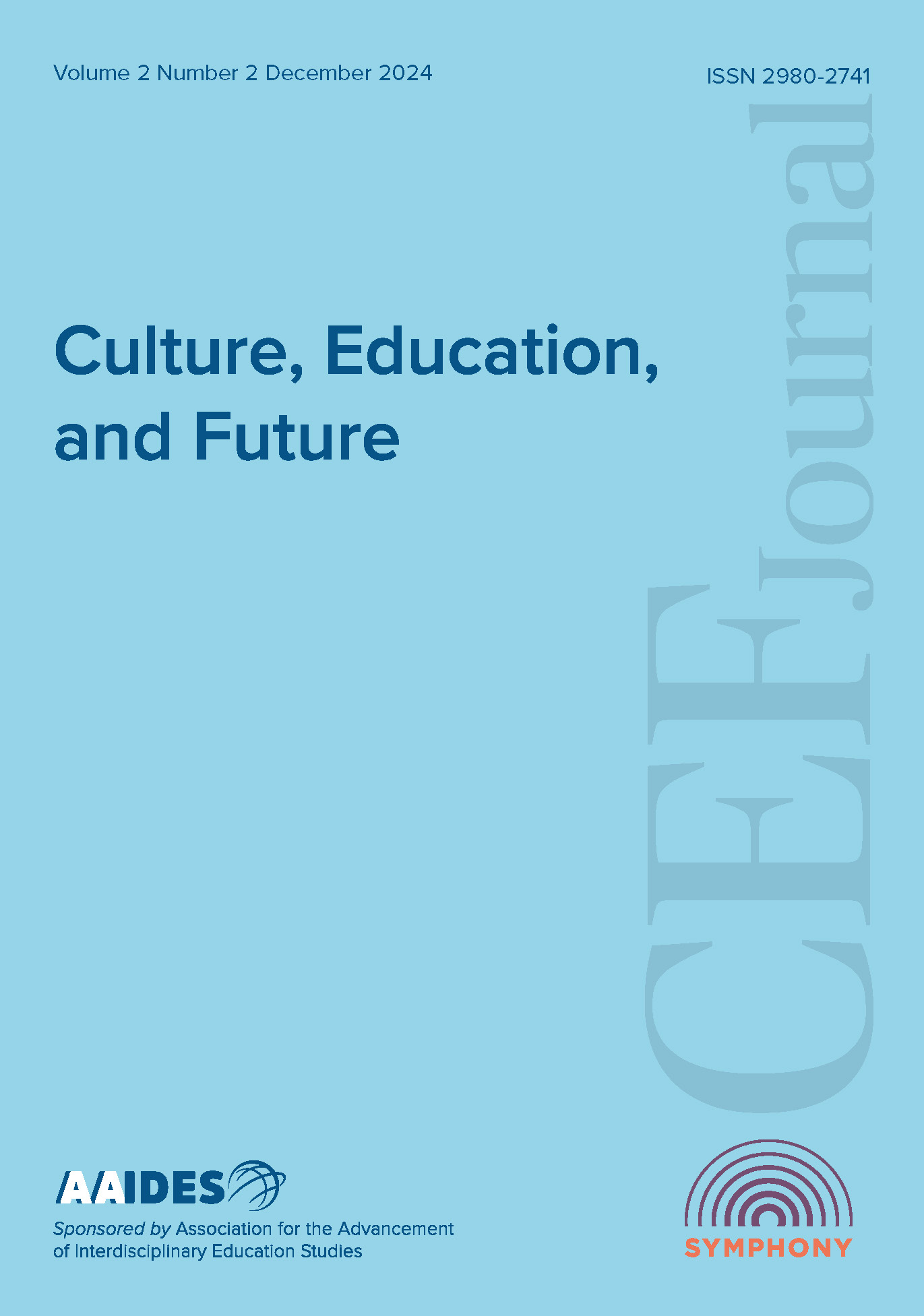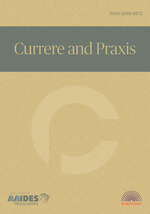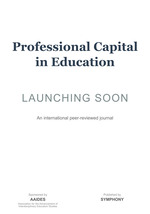Barriers and resilience: The impact of early marriage on girls’ education in Balochistan
DOI:
https://doi.org/10.70116/2980274129Keywords:
early child marriage, girls' education, educational disruption, cultural and socio-economic factorsAbstract
Early child marriage is still prevalent in many parts of the world today, especially in areas like Balochistan, where this paper found cultural and socioeconomic factors play an influential role in early marriage. The purpose of this qualitative research is to examine the effect of early marriage on the education of young girls in Balochistan. Guided by the intersectionality framework and gender role theory, this research explores the educational disruption and psychosocial implications, as well as the community and family pressures undergone by these girls, with 10 participants interviewed. The evidence presented shows that regardless of the education achieved prior to marriage, girls drop out of school at the moment they get married and, depending on the custom, continue their education either sparingly or not at all, as their responsibilities shift to housekeeping and child raising. On self-perceived psychosocial impact, participants mentioned isolation, loss of self-esteem, and increased psychological stress as some of the major effects. The challenges were, however, compounded by social and cultural dictating that education for married girls was unnecessary as they were already expected to be wives and future mothers; in-laws also added to this by rejecting the girl’s education. Still, in these circumstances, the participants’ spirit and desire for change remained high; most of them wanted to go back to school if only they had a chance. Such findings underscore the importance of developing the appropriate programs and services that would facilitate the removal of barriers educationally and psychologically facing young married girls. This study has established the need to educate married girls and supply all the necessary encouragement they need to combat the difficulties that early marriage brings.
Downloads
References
Ahmad, I., Ur Rehman, K., Ali, A., Khan, I., & Khan, F. A. (2014). Critical Analysis of the Problems of Education in Pakistan: Possible Solutions. International Journal of Evaluation and Research in Education (IJERE), 3(2). https://doi.org/10.11591/ijere.v3i2.1805 DOI: https://doi.org/10.11591/ijere.v3i2.1805
Anwar, J., Khan, S. R., Shah, M. Z., Brown, S., Kelly, P., & Phillips, S. (2023). Covid-19 and the (broken) promise of education for sustainable development: A case study from postcolonial Pakistan (Vol. 7). Brill. DOI: https://doi.org/10.1163/9789004540729
Bexell, M., & Jönsson, K. (2016). Responsibility and the United Nations’ Sustainable Development Goals. Forum for Development Studies, 44(1), 13–29. https://www.tandfonline.com/doi/full/10.1080/08039410.2016.1252424 DOI: https://doi.org/10.1080/08039410.2016.1252424
Braun, V., & Clarke, V. (2006). Using thematic analysis in psychology. Qualitative research in psychology, 3(2), 77–101. DOI: https://doi.org/10.1191/1478088706qp063oa
Bretos, I., & Marcuello, C. (2016). Revisiting globalization challenges and opportunities in the development of cooperatives. Annals of Public and Cooperative Economics, 88(1), 47–73. https://doi.org/10.1111/apce.12145 DOI: https://doi.org/10.1111/apce.12145
Chachar, Z. A. (2023). Enhancing access and quality of secondary education in Balochistan: identifying challenges and implementing effective solutions. Journal of Development and Social Sciences, 4(III). https://doi.org/10.47205/jdss.2023(4-iii)27 DOI: https://doi.org/10.47205/jdss.2023(4-III)27
Connell, R. W. (2002). Gender. Polity Press.
Coşkun, H. C. (2023). Reflection of the iceberg: Key issues and challenges of education in Balochistan. Culture, Education, and Future, 1(1), 47–65. https://doi.org/10.70116/298027413 DOI: https://doi.org/10.70116/298027413
Crenshaw, K. (1989). Demarginalizing the intersection of race and sex: A Black feminist critique of antidiscrimination doctrine, feminist theory, and antiracist politics. University of Chicago Legal Forum, 1989(1), 139–167.
Cresswell, J. (2013). Qualitative inquiry & research design: Choosing among five approaches. Sage.
Delprato, M., Akyeampong, K., & Dunne, M. (2017). Intergenerational education effects of early marriage in sub-Saharan Africa. World Development, 91(3), 173–192. https://doi.org/10.1016/j.worlddev.2016.11.010 DOI: https://doi.org/10.1016/j.worlddev.2016.11.010
Eagly, A. H. (1987). Sex differences in social behavior: A social-role interpretation. Lawrence Erlbaum Associates.
Eagly, A. H., & Wood, W. (2012). Social role theory. In Van Lange, P. A., Higgins, E. T., & Kruglanski, A. W. (Eds.), Handbook of theories of social psychology (Vol. 2, pp. 458-476). Sage Publications. DOI: https://doi.org/10.4135/9781446249222.n49
Fan, S., & Koski, A. (2022). The health consequences of child marriage: a systematic review of the evidence. BMC Public Health, 22(1), 1-17. https://doi.org/10.1186/s12889-022-12707-x DOI: https://doi.org/10.1186/s12889-022-12707-x
Government of Pakistan. (2021). National Institute of Population Studies Pakistan Girls Education Survey (PMMS) 2019 Policy Brief: Balochistan. Retrieved May 27, 2024, from http://www.nips.org.pk/publication/pakistan-maternal-mortality-survey-pmms-2019-policy-brief-balochistan
Government of Pakistan. (2024). National Institute of Population Studies. Retrieved June 14, 2024, from http://www.nips.org.pk/
Habeeb, R., & Kiazai, N. (2022). Factors affecting the quality education in rural areas of district Kech, Balochistan. Pakistan Social Sciences Review, 6(2), 652–662. DOI: https://doi.org/10.35484/pssr.2022(6-II)55
Herald Sun. (2024, November 15). ‘Be more like a man’: Barriers female educators face in leadership race. Retrieved June 21, 2024, from https://www.heraldsun.com.au/victoria-education/be-more-like-a-man-female-educators-face-gender-barriers-and-discrimination-in-leadership-race/news-story/b6f98ca9d3272b61c678455dd2c70343?utm_source=chatgpt.com
Human Rights Watch. (2021, December 2). Pakistan: Events of 2021. Human Rights Watch. Retrieved July 3, 2024, from https://www.hrw.org/world-report/2022/country-chapters/pakistan
Human Rights Watch. (2023, January 12). Pakistan: Events of 2022. Human Rights Watch. Retrieved July 3, 2024, from https://www.hrw.org/world-report/2023/country-chapters/pakistan
Human Rights Watch. (2024a, January 11). Pakistan: Events of 2023. Human Rights Watch. Retrieved July 3, 2024, from https://www.hrw.org/world-report/2024/country-chapters/pakistan
Human Rights Watch. (2024b, January 11). Pakistan: Widening Crackdown on Dissent | Human Rights Watch. Retrieved July 3, 2024, from https://www.hrw.org/news/2024/01/11/pakistan-widening-crackdown-dissent
Iqbal, S., Zakar, R., Fischer, F., & Zakar, M. Z. (2022). Consanguineous marriages and their association with women’s reproductive health and fertility behavior in Pakistan: secondary data analysis from Demographic and Health Surveys, 1990-2018. BMC Women’s Health, 22(1), 118. https://doi.org/10.1186/s12905-022-01704-2 DOI: https://doi.org/10.1186/s12905-022-01704-2
Islam, M. M. (2022). Child marriage, marital disruption, and marriage thereafter: evidence from a national survey. BMC Women’s Health, 22(1), 1–10. https://doi.org/10.1186/s12905-022-02088-z DOI: https://doi.org/10.1186/s12905-022-02088-z
Jafarey, S., Mainali, R., & Montes-Rojas, G. (2020). Age at marriage, social norms, and female education in Nepal. Review of Development Economics, 24(3), 878–909. https://doi.org/10.1111/rode.12692 DOI: https://doi.org/10.1111/rode.12692
Kamal, S. M., & Ulas, E. (2021). Child marriage and its impact on fertility and fertility-related outcomes in South Asian countries. International Sociology, 36(3), 362-377. https://doi.org/10.1177/0268580920961316 DOI: https://doi.org/10.1177/0268580920961316
Kidman, R. (2016). Child marriage and intimate partner violence: a comparative study of 34 countries. International Journal of Epidemiology, 46(2), 662–675. https://doi.org/10.1093/ije/dyw225 DOI: https://doi.org/10.1093/ije/dyw225
Le Monde. (2024, November 11). ‘Sexual violence can be explained not only by a lack of education, but also by a lack of interest and activism by men’. Retrieved June 12, 2024, from https://www.lemonde.fr/en/opinion/article/2024/11/11/sexual-violence-can-be-explained-not-only-by-a-lack-of-education-but-also-by-a-lack-of-interest-and-activism-by-men_6732452_23.html?utm_source=chatgpt.co
Mbamba, C. R., Yeboaa, P. A., Gyimah, C., & Mccarthy, M. (2023). When child marriage and child welfare intersect: Understanding the barriers to education. Children & Society, 37(3), 966–978. https://doi.org/10.1111/chso.12640 DOI: https://doi.org/10.1111/chso.12640
Mehtap, S., Pellegrini, M. M., Caputo, A., & Welsh, D. H. B. (2017). Entrepreneurial intentions of young women in the Arab world. International Journal of Entrepreneurial Behavior & Research, 23(6), 880–902. https://doi.org/10.1108/ijebr-07-2017-0214 DOI: https://doi.org/10.1108/IJEBR-07-2017-0214
Nawaz, S., Kiran, A., Koser, M., Shabbir, M. S., & Zamir, A. (2022). The dynamic effect of education levels, marriage status, and domestic life of women in Balochistan. Journal of Public Value and Administrative Insight, 5(2), 455–466. https://doi.org/10.31580/jpvai.v5i2.2588 DOI: https://doi.org/10.31580/jpvai.v5i2.2588
Stromquist, N. P. (2015). Women’s empowerment and education: Linking knowledge to transformative action. European Journal of Education, 50(3), 307–324. DOI: https://doi.org/10.1111/ejed.12137
UNESCO. (2016). UNESCO, 2015. Retrieved June 20, 2024, from https://unesdoc.unesco.org/ark:/48223/pf0000244834
UNESCO. (2022). Global education monitoring report 2022: Gender report, deepening the debate on those still left behind. Retrieved November 19, 2024, from https://unesdoc.unesco.org/ark:/48223/pf0000381329
UNICEF. (2020). Annual Report 2020: An in-depth overview of UNICEF Pakistan’s activities in 2020. Www.unicef.org. https://www.unicef.org/pakistan/reports/annual-report-2020
UNICEF. (2022a). UNICEF Pakistan Country Office Annual Report 2022. Retrieved June 23, 2024, from https://www.unicef.org/reports/country-regional-divisional-annual-reports-2022/Pakistan
UNICEF. (2022b). Pakistan Humanitarian Situation Report, March 2022. Retrieved July 1, 2024, from https://www.unicef.org/documents/pakistan-humanitarian-situation-report-march-2022
UNICEF. (2023). Child marriage. Retrieved June 8, 2024, from https://www.unicef.org/protection/child-marriage
UNICEF. (2024a, March). Consolidated Emergency Report 2023: Overview of UNICEF Pakistan’s robust humanitarian response to the multifaceted challenges faced in 2023. Retrieved June 4, 2024, from https://www.unicef.org/pakistan/reports/consolidated-emergency-report-2023
UNICEF. (2024b, May 6). Publications: UNICEF’s work in Pakistan, containing strategies, reports, studies, evaluations, surveys, data and advocacy pieces. Retrieved June 19, 2024, from https://www.unicef.org/pakistan/publications
WHO. (2023). Pakistan: For a safer, healthier and fairer world results report programme budget 2020–2021. Retrieved May 29, 2024, from https://www.who.int/about/accountability/results/who-results-report-2020-2021/2021/pakistan
Downloads
Published
How to Cite
Issue
Section
License
Copyright (c) 2024 Symphony

This work is licensed under a Creative Commons Attribution 4.0 International License.














